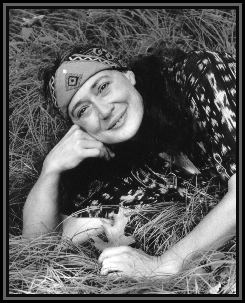| |
|
|
| |
Weeds in Your Garden? -- Bite Back!
c.1999 Susun S. Weed
|
| |
|
I always say the gardener's best revenge is to eat the weeds.
I've been doing it for thirty years and can testify that my health
and the health of my garden has never been better. Here are a
few hints for gardeners who'd rather eat their weeds than hate
them (and for non-gardeners who are adventurous enough to try
out nature's bounty).
View your weeds as cultivated plants; give them the same care
and you'll reap a tremendous harvest. Harvest frequently and do
it when the weeds are young and tender. Thin your weeds and pinch
back the annuals so your weeds become lushly leafy. Use weeds
as rotation crops; they bring up subsoil minerals and protect
against many insects.
"Interplant" (by not weeding out) selected weeds;
try purslane, lamb's quarters, or amaranth with your corn, chickweed
with peas/beans, and yellow dock, sheep sorrel, or dandelion with
tomatoes).And, most importantly, harvest your weeds frequently,
regularly, and generously.
|

|
| Dandelion
by Durga Bernhard '88 |
Overgrown radishes, lettuces, and beans are tough and
bitter. So are weeds that aren't harvested frequently enough. Give
your chickweed a haircut (yes! with scissors) every 4-7 days and
it will stay tender all spring, ready to be added to any salad.
If you forget a patch for two weeks, it may get stringy and tough
and full of seed capsules. All is not lost at this stage. The seeds
are easy to collect – put the entire plant in a plastic bag
in the refrigerator for 2-3 days and use the seeds that fall to
the bottom of the bag – and highly nutritious, with exceptional
amounts of protein and minerals. |
 |
Unthinned carrots and lettuces grow thin and spindly, so do unthinned
lamb's quarters, amaranth, and other edible weeds. Wherever you
decide to let the weeds grow, keep them thinned as you would any
plant you expect to eat. Here's how I do it: In early spring I lightly
top dress a raised bed with my cool-method compost (which is loaded
with the seeds of edible weeds). Over this I strew a heavy coating
of the seeds of lettuces and cresses and brassicas (cultivated salad
greens), then another light covering of shifted compost.
Naturally, weed seeds germinate right along with my salad greens.
When the plants are about two inches high, I go through the bed
and thin the salad greens, pull out all grasses, smartweeds, cronewort,
clear weed, and quick weed (though the last three are edible, I
don't find them particularly palatable) and thin back the chickweed,
mallows, lamb's quarters, amaranth, and garlic mustard and other
edible wild greens. |
|
|
|
Keep those annuals pinched back. You wouldn't let your basil go
straight up and go to flower, don't let your lamb's quarter either.
One cultivated lamb's quarter plant in my garden grew five feet
high and four feet across, providing greens for salads and cooking
all summer and a generous harvest of seeds for winter use.
|
When a crop of greens has bolted or gone to seed in your garden,
you pull it all out and replant with another crop. Do the same
with your weeds. We eat the greens of garlic mustard all spring,
then pull it out just before it bolts (making a horseradishy vinegar
from the choicest roots) -- often revealing a generous crop of
chickweed lurking underneath.
Here are some of my favorite
edible weeds:
• Burdock (Arctium
lappa) Roots of non-flowering plants harvested after frost
make a vinegar that is deep, and richly flavorful as well as a
world-renowned tonic. Petioles of the leaves and the flowering
stalk are also edible; for recipes see my book Healing Wise.
• Chickweed (Stellaria
media) Young leaves and stalks, even flowers, in salads. Blend
with virgin olive oil and organic garlic for an unforgettable
pesto. Add seeds to porridge.
|
 |
|
|
|
|
|
• Dandelion (Taraxacum officinalis) Leaves
eaten at any time, raw or cooked, but especially tasty in the
fall – not spring!. Roots harvested any time; pickle in apple
cider vinegar for winter use. Dandelion flower wine is justly
famous.
• Garlic Mustard (Alliaria officinalis) Year-round
salad green. Leaves used in any season, even winter. Roots are
harvested before plant flowers. Seeds are a spicy condiment.
• Lamb's quarter (Chenopodium alba and related
species, e.g. Chenopodium quinoa). Young leaves in salads.
Older leaves and tender stalks cooked. Leaves dried and ground
into flour (replaces up to half the flour in any recipe). Seeds
dried and cooked in soups, porridge.
• Purslane (Portulacca oleracea) The fleshy
leaves and stalks of this plant are incredibly delicious in salads
and not bad at all preserved in vinegar for winter use.
• Sheep Sorrel (Rumex acetosella) Leaves
add a sour spark to salads. Cooked with wild leeks or cultivated
onion and potato they become a soup called "schav."
• Stinging Nettle (Urtica dioica) Young leaves
cooked for 40-45 minutes and served in their broth are one of
my favorite dishes. Seeds can be used in baked goods, porridge.
For more information
see my book Healing Wise
Written by: Susun
S. Weed, PO Box 64, Woodstock NY 12498 1-845-246-8081
|
Healing
Wise
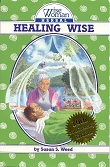 by Susun
S. Weed by Susun
S. Weed
Introduction by Jean Houston.
Superb herbal in the feminine-intuitive mode. Complete instructions for using common plants for food, beauty, medicine, and longevity. Seven herbs -- burdock, chickweed, dandelion, nettle,
oatstraw, seaweed, and violet -- are explored in depth.
A Special Tenth Anniversary edition of this
classic herbal, profusely illustrated. 312 pages.
Retails for $21.95
Read a Review
Order HEALING WISE in our Bookshop
I just started reading your book, Healing Wise. Your
humor and approach to life seem so "down-to-earth",
just like your favorite powerful weeds. Thank you for sharing
and nourishing! ~ Diane
|
top of page

|
|
|
|
|
|
|
|
|
| |
|
Feeling Frisky? Herbs for Fertility
c.1999 Susun S. Weed
|
For thousands of years knowledge of the herbs and wild plants
that could increase fertility were the secrets of the village
wise women. But after the holocaust against European Wise Women
(the "burning times") and the virtual extermination
of Native American medicine women, this knowledge virtually disappeared.
In fact, many people erroneously believe that "primitive
people" had no means of controlling the likelihood of pregnancy.
Nothing could be further from the truth.
Many common plants can be used to influence fertility, including
red clover, partridge berry, liferoot, wild carrot, and wild yam.
Some of these grow wild, others are easy to cultivate, and, with
the exception of wild carrot, all are also readily available at
health food stores.
|
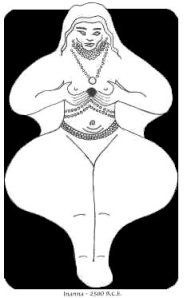 |
|
One of the most cherished of the fertility-increasing plants
is red clover (Trifolium pratense). Common in fields and
along roadsides, it has bright pink (not really red) blossoms
from mid-summer into the chilly days of fall. A favorite flower
of the honeybees, the tops (blossoms and appending leaves) are
harvested on bright sunny days and eaten as is, or dried for medicinal
use.
The raw blossoms are delicious in salads and nutritious when
cooked with grains such as rice or millet. To make a fertility-enhancing
infusion, I take one ounce by weight of the dried blossoms (fresh
won't work for this application) and put them in a quart size
canning jar. I fill the jar with boiling water, screw on a tight
lid, and let it steep at room temperature overnight (or for at
least four hours).
|
Dozens of women have told me that they had successful pregnancies
after drinking a cup or more (up to four cups) a day of red clover
infusion. It is especially helpful if there is scaring of the
fallopian tubes, irregular menses, abnormal cells in the reproductive
tract, or "unexplained" infertility. It may take several
months for the full effect of this herb to come on and pregnancy
may not occurs until you have used it for a year or two. If you
like, you can improve the taste by including some dried peppermint
(a spoonful or two) along with the dried clover blossoms when
making your infusion. Treat the father of the child-to-be to some
red clover infusion, too!
That little evergreen creeper that carpets some parts of the
woods around your house is partridge berry (Mitchella repens),
also known as squaw weed, supposedly because of its ability to
enhance fertility. (My teacher Twylah Nitsch, grandmother of the
Seneca Wolf clan, says that "squaw" is a slang term
meaning "schmuck" or, in the proper term, "penis,"
and therefore should not be used in denoting a plant meant to
be used by women.) Keep an eye out this spring and see if you
can catch Mitchella blooming. Then you'll see why she's sometimes
called "twin flower."
Interestingly, when the paired flowers fall off, they leave
behind but one berry to ripen. (The shiny red berries you've noticed
in the forest winter or spring. Yes, they are safe to eat, but
leave some for the partridges.) The symbolism of two flowers forming
one berry is certainly a suitable icon for fertility. I make a
medicinal vinegar by filling a small jar with the fresh leaves,
adding apple cider vinegar until the jar is full again. A piece
of waxed paper held in place with a rubber band and a label (including
date) completes the preparation, which must sit at room temperature
for six weeks before use. I enjoy up to a tablespoonful of the
vinegar on my salads or in my beans.
By mid- to late-May, the yellow blossoms of liferoot (Senecio
aureus) enliven my swamp (in upstate New York) and the neighboring
roads where there is adequate water and rich soil. A powerful
medicine resides in all parts of this lovely wildflower. As the
root has a dangerous reputation, I restrict myself to using only
the flowers and leaves, which I harvest in bloom, and quickly
tincture. (For instructions for making your own tinctures, please
see any of my books.) Small doses of this tincture (3-8 drops
a day), taken at least 14 days out of the month, will regulate
hormone production, increase libido, normalize the menses, relieve
menstrual pain, and improve fertility. The closely related Senecia
jacobea and Senecio vulgaris can also be used.
|
Wild carrot (Daucus carota), better known as Queen Anne's
lace, is such a common roadside plant that most people are amazed
to learn that it is a proven anti-fertility herb. In addition
to being the wild cousin of carrot, it is related to parsley,
dill, caraway, anise, celery, cumin, and a (now extinct) plant
whose seeds were the birth-control of choice for many a classical
Greek or Roman woman.
The aromatic seeds of wild carrot are collected in the fall
and eaten (a heaping teaspoonful a day) to prevent the implantation
of a fertilized egg. In one small study the effectiveness rate
after thirteen months of use was 99%.
As modern scientific medicine reports that one-third of all
fertilized eggs are passed out of the body without implanting
in the uterus, this method of birth control seems in complete
agreement with nature. Of the hundreds of women currently using
this anti-fertility agent, I have heard virtually no reports of
any side-effects.
|
|
|
Note that many books caution you to beware the danger of confusing
poison hemlock and wild carrot. Poison hemlock is rather scarce
in our area, and, at any rate, does not smell or taste of carrot
(as does Queen Anne's lace), so I believe this warning to be a
red herring. In addition, wild carrot leaves have small hairs
on them, while the leaves of poison hemlock are smooth.
Another anti-fertility herb that has been tested by small groups
of modern women is wild yam (Dioscorea villosa). Since
birth-control pills were originally made from this plant, it is
not at all surprising that it has the effect of blocking conception
when taken daily in rather large doses: either a cup of tea or
two capsules taken three times a day. Does it have detrimental
effects? Current studies are too small to show any, but there
is a possibility that there could be.
Interestingly enough, if wild yam is taken is small doses (a
cup of tea or 10-20 drops of the tincture daily from onset of
menses until mid-period) it increases fertility! In either case,
the effect seems to be triggered by the large amount of hormone-like
substances found in this root. When taken daily, these substances
may be converted into progesterone, thus decreasing the possibility
of conception. When taken for the two weeks preceding ovulation,
these substances may be converted into LH and FSH, hormones which
are needed to make the egg ready to be fertilized.
Other common weeds and garden plants of our area that have been
used to increase or decrease fertility include stinging nettle,
oatstraw, pennyroyal, Jack-in-the-pulpit, rue, and parsley.
The earth is full of wonders, and green magic abounds. As more
and more women remember that they are wise women, more of the
wonders and the magic will be revealed. May your days be filled
with many green blessings.
For more information
see my book Childbearing Year
|
Written by: Susun
S. Weed, PO Box 64, Woodstock NY 12498 1-845-246-8081
|
Wise Woman Herbal for the Childbearing Year
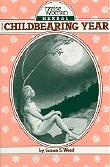 by Susun S. Weed by Susun S. Weed
Foreword by Jeannine Parvati Baker.
192 pages, index, lovely illustrations.
Now in its 24th printing. A confirmed favorite with pregnant women, midwives, childbirth educators, and new parents. Packed with clear, comforting, and superbly helpful information.
Retails for $17.95
Read a review
Read an excerpt Herbal Birth Control
Order WISE WOMAN HERBAL for the CHILDBEARING YEAR in our Bookshop
|
top of page

|
|
|
|
|
|
|
|
|
|
|
|
Ten Tips for Women with PMS
c.1998 Susun S. Weed |
|
|
Water retention, mood swings, sore breasts, and indigestion are
problems experienced by many women in the week preceding menstruation.
Here are a few tips from Susun Weed's best-selling book, NEW
Menopausal Years the Wise Woman Way (Alternatives for Women 30-
90) to help ease these discomforts.
|
|
|
To relieve water retention
1) 10-20 drops of
dandelion root tincture in a cup of water with meals and before
bed.
2) A strong infusion
(one ounce of dried herb in a quart of boiling water, brewed overnight)
of the common weed, stinging nettle, not only relieves, but also
helps prevent further episodes of water retention. Weed says she
drinks a cup or more of this infusion daily whenever she wants
to nourish her kidneys and adrenals.
|
|
|
|
To moderate mood swings
3) Tincture of the
flowering tops of fresh motherwort is a favorite calmative of
herbalist Weed. She uses 5-10 drops in a small amount of water
as a dose, which she repeats as needed, sometimes as frequently
as 3-4 times an hour, until the desired effect is achieved. "I
never feel drugged or groggy or out-of-it when I use motherwort
to help me calm down," she says.
4) For women who
consistently feel rage premenstrually, Weed uses 20-30 drops of
motherwort tincture twice a day for a month to help stabilize
moods and urges the woman to take a moon day -- one day right
before or at the start of the menstrual flow which is set aside
for you and you alone.
5) One or more cups
of an infusion of the herb oatstraw (the grass of the plant that
gives us oatmeal) helps the nerves calm down and provides a rich
source of minerals known to soothe frazzled emotions.
|
|
|
|
To relieve congestion
and tenderness in the breasts
6) 20-30 drops of
the tincture of cleavers, another common weed, works wonders.
This plant, also called "goose grass" was used as a
black tea substitute by the colonists. The dose may be repeated
every hour or up to 6 times a day.
7) Women who get
a lot of calcium and magnesium from their diet (leafy greens,
yogurt, and many herbs are rich in these minerals) have less breast
tenderness. Increase the minerals in your diet with a cup or more
of red clover/mint infusion daily.
8)Large cabbage leaves,
steamed whole until soft, and applied as warm as tolerable, can
be used as a soothing compress on breasts which are sore and swollen.
|
|
|
To relieve digestive distress
9) A daily doses
of 1 teaspoonful/5ml yellow dock root vinegar.
10) A cup of yogurt
in the morning (buy it plain and add fruit at home) replaces gut
flora and insures easy digestion all day long.
For more information see my
book Menopausal Years
Written by: Susun
S. Weed, PO Box 64, Woodstock NY 12498 1-845-246-8081
|
.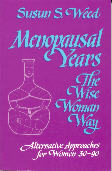 NEW Menopausal Years the Wise Woman Way: NEW Menopausal Years the Wise Woman Way:
Alternative Approaches for Women 30 - 90
by Susun S. Weed
Foreword by Juliette de Bairacli Levy.
304 pages, index, magical illustrations.
Completely revised with 100 new pages. All the remedies women know and trust plus hundreds
of new ones. New sections on thyroid health, fibromyalgia, hairy problems, male menopause,
and herbs for women taking hormones. Recommended by Susan Love MD and Christiane Northrup MD.
Retails for $22.95
read some excerpts :
Building Better Bones
Kundalini Meditation
Order New Menopausal Years in our Bookshop
|
top of page

|
|
|
|
|
|
|
Menopausal Years the Wise Woman Way
c.2000 Susun S. Weed
|
|

|
Menopause
is a period of transition and metamorphosis, like puberty.
It consists of three stages: isolation, melt down, and emergence.
Each stage calls forth new energies and new perceptions of ourselves.
Each stage has different demands, different tasks, and different
needs.
|
|
Startling facts about menopause:
|
|
|
|
The Grandmother Hypothesis maintains that "menopause, like
a big brain and an upright
posture,is one of the essential traits of the human which allowed
us to colonize the world."
|
|
|
Menopause is not a recent phenomenon, but an ancient women's mystery,
with special gifts
for the woman who uses its energies wisely.
|
|
|
Estrogen is not one hormone, but many, and our bodies continue
to make estrogens all of our
lives. The adrenals, the fat tissues, and perhaps the uterus make
estrogens.
|
|
|
Herbal hormone (phytosterols, or phytoestrogens) are usable by
the body and, in contrast to
prescribed hormones, protect against breast cancer.
|
|
|
The levels of hormones in a woman's blood are never higher than
when she is in menopause.
|
Favorite herbs for menopausal
women:
|
 |
Oatstraw (Avena sativa)
infusion strengthens the nerves, helps reduce emotion distress,
promotes sound sleep, keeps the bones and heart strong, and strengthens
libido. The tincture is a stronger sedative but not nourishing
to the bones and heart. Oats for breakfast is an excellent way
to "take" this herb, but avoid pills and capsules. Oatstraw
baths are exceptionally calming. Instructions for making one are
in my green book: Healing
Wise
|
Nettle (Urtica dioica)
infusion strengthens the adrenals, eases anxiety, increases energy,
helps prevent night sweats, builds blood, protects bones and heart.
Eating cooked nettle is another excellent way to gather its benefits,
as is nettle vinegar. I avoid freeze-dried, encapsulated, or tinctured
nettle, believing all these forms ineffective and over-priced.
|
 |
 |
Motherwort (Leonurus cardiaca)
-- tincture of the fresh flowering tops -- is a favorite with
menopausal women, their daughters and their mothers. A few drops
(up to 25 at a time) will calm emotions, relieve heart palpitations
(and strengthen the heart), reduce the severity of hot flashes,
increase vaginal lubrication, moderate and eliminate PMS and menstrual
cramping. Motherwort vinegar is a fantastic tonic, and tasty,
thank goodness. The tea is violently bitter and disliked by 99
out of 100 women, including me, yuck.
|
Dandelion (Taraxacum officinale)--
any part, in any form -- is a superb strengthener for the liver,
the control center for hot flashes. Dandelion improves digestion,
especially of calcium, helps relieve headaches, and sees to it
that the liver provides steady blood sugar supplies. Dandelion
wine (from the blossoms) is the most elegant way to take this
remedy, but the cooked leaves and vinegars (as well as the pickled
parts) of the roots and/or leaves are also excellent nourishing
digestives. The tincture, especially of the root, is considered
the strongest medicine, but doesn't contain bone-building nutrients,
so is less ideal than the other forms.
|
 |
Written by: Susun
S. Weed, PO Box 64, Woodstock NY 12498 1-845-246-8081
|
top of page

|
|
|
|
|
|
|
|
|
|
|
|
|
|
|
Healthy Bones the Wise Woman Way
c.2001 Susun S. Weed
|
|
|
CONTENTS
Forget Osteoporosis
Get Flexible
Nourishing Our Bones
Bones Need Protein
Bones Need High-Quality Fats
Bones Need Minerals
Extracting Minerals
Herbs Are Mineral Powerhouses
8 Keys to Healthy Bones
|

|
Every woman I know is concerned about osteoporosis. Frightening
stories equate it with broken hips, bent spines, wheelchairs,
and death--things we all want to avoid. What can we do? Should
we take calcium supplements? hormones? Fosamax? Can we rely on
our green allies?
The Wise Woman tradition maintains that simple lifestyle choices--
including, but not limited to, regular use of nourishing herbal
infusions, medicinal herbal vinegars, yogurt, and seaweed -- are
sufficient to preserve bone and prevent breaks. And, further,
that these lifestyle choices produce multiple health benefits,
including reduction of heart disease and breast cancer, without
the problems and risks associated with taking hormones. As for
supplements, as we will see, they do more harm than good.
|
Forget
Osteoporosis
|
First, we must rid ourselves of the idea that osteoporosis is
important. In the Wise Woman Tradition, we focus on the patient,
not the problem. There are no diseases and no cures for diseases.
When we focus on osteoporosis, we cannot see the whole woman.
The more we focus on disease, even disease prevention, the less
likely we are to know how to nourish health/wholeness/holiness.
In fact, focusing our attention narrowly on the prevention of
osteoporosis actually increases the incidence of breast cancer.
The postmenopausal women with the highest bone mass are the most
likely to be diagnosed with breast cancer. Women who take estrogen
replacement to prevent osteoporosis, even for as little as five
years, increase their risk of breast cancer by twenty percent;
if they take hormone replacement, the risk increases by forty
percent.
These risks might be vindicated if we could show a correlation
between bone density and bone breakage, but there isn't one. When
I found myself at dinner last year (2000) with Susan Brown, director
of the Osteoporosis Information Clearing House, I asked her to
point me in the direction of any study that shows a clear relationship
between osteoporosis and broken bones. She smiled. "There
are none."
"In a recent study," she continued. "Researchers
measured the bone density of people over 65 who had broken bones.
Twenty-five percent had osteoporosis. Twenty-five percent had
high bone density. And fifty percent had normal density."
Notice that those with high bone density broke their hips as frequently
as those with osteoporosis.
|
Get
Flexible
|
If osteoporosis isn't the problem, what is it?
In a word: inflexibility. Flexible bones bend; stiff bones break.
This holds true even if the flexible bone is thin, even if the
stiff bone is thick. Think of a piece of dead pine wood. Though
it may be thick, it is brittle and breaks easily. Think of a green
pine twig, even a small one is nearly impossible to break. Flexible
bones, whether thick or thin, bend rather than break.
Flexibility is synonymous with health in the Wise Woman Tradition.
It is created by nourishing and tonifying. Bone flexibility is
created by nourishing the bones and tonifying the muscles around
them. Tonifying is as important as nourishing, but because we
are herbalists, let's focus on the benefits nourishing herbs offer
to women who wish to have strong, flexible bones.
|
Nourishing
Our Bones
|
Old age does not make weak bones. Poor nutrition makes weak bones.
What are bones made of? Like all tissues, they contain protein.
They are rich in minerals, not just calcium, but also potassium,
manganese, magnesium, silica, iron, zinc, selenium, boron, phosphorus,
sulphur, chromium, and dozens of others. And in order to use those
minerals, vitamin D must be present and the diet must contain
high-quality fats.
|
Bones
Need Protein
|
|
I have heard, and no doubt you have too, that animal protein
leaches calcium from the bones. This is only half true. All protein,
whether from meat, beans, soy, grains, or vegetables, uses calcium
in digestion. Protein from soy is especially detrimental to bone
health; soy is not only naturally deficient in calcium, it also
directly interferes with calcium uptake in the bones.
Traditional diets combine protein and calcium (e.g. seaweed
with tofu, tortillas made from corn ground on limestone with beans,
and melted cheese on a hamburger). Protein-rich herbs such as
stinging nettle, oatstraw, red clover, and comfrey leaf provide
plenty of calcium too, as do yogurt, cheese, and milk (which also
provide the healthy fats needed to utilize the minerals). Limiting
protein limits bone health. Increasing mineral-rich proteins increases
bone health.
|
Bones
Need High-Quality Fats
|
Hormones are kinds of fats, and cholesterol is the precursor
to many of them. Post-menopausal bone problems do not, to my mind,
arise from a lack of estrogen, but from a lack of fat. If the diet
is deficient in good-quality fats, hormones will be produced in
inadequate amounts. And vitamin D, a hormone-like vitamin, will
not be utilized well. Further, mineral absorption is dependent on
fats. A low-fat diet, in my opinion, makes it quite difficult to
have healthy bones.
|
Bones
Need Minerals
|
Bones do need calcium, and they are the last to get it, so our
diets need to be very rich in this mineral. But to focus on calcium
to the exclusion of other minerals leads to broken bones, for
calcium is brittle and inflexible. Think of a piece of chalk,
calcium carbonate, and how easily it breaks. A six-and-a-half
year study of 10,000 white women over the age of 65 found that
"Use of calcium supplements was associated with increased
risk of hip and vertebral fracture; use of Tums TM antacid tablets
was associated with increased risk of fractures of the proximal
humerus." The other minerals found in bone lend it flexibility.
When we get our calcium from herbs and foods (containing a multitude
of minerals) we nourish healthy bones.
|
Extracting
Minerals
|
From the Wise Woman perspective, the perfect way to maintain
bone health, bone flexibility, and resistance to fracture is to
use mineral-rich herbs and foods. Because minerals are bulky,
and do not compact, we must consume generous amounts to make a
difference in our health. Just as eating a teaspoon a carrots
is laughable, so is taking mineral-rich herbs in capsule or tincture
form. Because minerals are rock-like, we need to break open cell
walls to get at them. Raw, fresh foods do not deliver minerals
to our bodies. To extract minerals, we need heat, time, and generous
quantities of plant material. I prefer to extract minerals into
water or vinegar.
To make a nourishing herbal infusion, I pour one quart/liter
boiling water over one ounce/30 grams of dried herb in a canning
jar, covering it tightly, and letting it brew overnight. In the
morning, I strain out the mineral-rich liquid and drink it --
over ice or heated, with honey or milk, mixed with black tea,
seasoned with mint, spiked with rum, however you want it. You
can drink the entire quart in one day, but do finish it within
two.
My favorite nourishing herbal infusions are made from oatstraw
(Avena sativa) or nettle (Urtica dioica) or red
clover (Trifolium pratense) or comfrey leaves (Symphytum
uplandica x). I sometimes add a little bit of aromatic herb
such as peppermint (Mentha pipperata), lemon balm (Melissa
off.), or bergamot (Monarda didyma) to change the flavor.
To extract minerals from fruits and vegetables, I cook them
for long periods of time, or until there is color and texture
change, evidence that the cell walls have been broken. Kale cooked
for an hour delivers far more mineral to your bones than lightly
steamed kale. Fresh juices contain virtually no minerals. Cooking
maximizes the nutrients available to us, especially the minerals.
|
Herbs
Are Mineral Powerhouses
|
Eating a cup of cooked greens every day is difficult, even for
the most motivated woman. But drinking nourishing herbal infusions,
eating seaweeds, and using medicinal herbal vinegars is easy.
They are tasty, fun to prepare and use, and add a big nutritional
plus with virtually no calories attached. Nourishing herbs and
garden weeds are typically far richer in minerals than ordinary
foodstuffs. Not only are nourishing herbs exceptional sources
of minerals, their minerals are better at preventing bone breaks
than supplements.
The ability of herbs to counter osteoporosis may be more complex
than their richness of minerals, however. The minerals in green
plants seem to be utilized more readily by the body and to be
ideal for keeping bones healthy. Dr. Campbell, professor of Nutritional
Biochemistry at Cornell University, has done extensive research
in rural China where the lowest known fracture rates for mid-life
and older women were found. He says, "The closer people get
to a diet based on plant foods and leafy vegetables, the lower
the rates of many diseases, including osteoporosis."
|
In
Summation
|
My own experiences in helping women regain and maintain bone
density and flexibility have led me to believe that life-style
modifications work exceptionally well for motivated women who
wish to avoid the risks and expense of long-term pill use. Nourishing
herbal infusions, mineral-rich herbal vinegars, yogurt, and seaweed,
combined with attention to tonification of the muscles, unfailingly
increases bone density and creates flexible, healthy bones and
women.
Green blessings to you all.
|
|
|
|
8
Keys to Healthy Bones |
|
|
1.
Good nutrition for your mother while pregnant with you. |
| |
2.
Good nutrition for you during the formation of your bones. |
| |
3.
Monthly menses throughout your fertile years, especially before 30. |
|
| |
4.
Special attention to maintaining high levels of protein, fat, minerals,
and vitamins from herbs and foods in your
diet when menses cease
during pregnancy, lactation, or after menopause. |
|
| 5.
Regular rhythmical movement, the faster the better, daily. |
|
6.
Consistent practice of yoga, tai chi, or any strengthening, opening,
flexibility-building discipline. |
|
|
|
|
|
|
| 7.
Chop wood, carry water. |
 |
| 8.
Eat yogurt. |
|
Written by: Susun
S. Weed, PO Box 64, Woodstock NY 12498 1-845-246-8081
|
|
|
top of page

|
|
|
|
|
|
|
|
|
|
Order
Weed's Books online and...
Susun will personally autograph your book!
|
|
|
|
|

|
Wise Woman Herbal for the Childbearing
Year
Author: Susun Weed
Simple, safe remedies for pregnancy, childbirth, lactation, and newborns.
Includes herbs for fertility and birth control. Foreword by Jeannine Parvati
Baker.
192 pages, index, lovely illustrations.
Retails for $14.95
Read more about this book
|
|
|
|
Click
here to order online
|
|
|
|
|
|
|
|
|

|
Healing Wise
Author:
Susun S. Weed
Superb explanation of healing traditions. Learn about the Wise Woman
Way. Contains complete instructions for using common plants for food,
beauty, medicine, and longevity. Foreword by Jean Houston.
312 pages, index, illustrations by Durga Bernhard
Retails for $21.95
Read more about this book
|
|
|
|

|
Click here to order online
(credit card orders welcome) |
|
|
|
|
|
|
|
|

|
NEW Menopausal
Years the Wise Woman Way:
Alternative Approaches for Women 30 - 90
Author:
Susun S. Weed
Pre-publication special!! The best book on menopause is now better. Completely
revised with 100 new pages. All the remedies women know and trust plus
hundreds of new ones. New sections on thyroid health, fibromyalgia, hairy
problems, male menopause, and herbs for women taking hormones. Recommended
by Susan Love MD and Christiane Northrup MD. Introduction by Juliette
de Bairacli Levy. 304 pages, index, illustrations.
|
|
|

|
Yours
for $22.95 plus priority shipping
(credit card orders welcome) |
|
|
|
|
|
|
|

top of page |
Breast Cancer? Breast Health!:
The Wise Woman Way
Author: Susun S. Weed
Foods, exercises, and attitudes to keep your breasts healthy. Plus complementary
medicines to ease side effects of surgery, radiation, chemotherapy, and
tamoxifen. What to do if you find a lump. Foreword by Christiane Northrup,
MD
380 pages, index, profusely illustrated.
Retails for $21.95
Read more about this book
|
|
 |
Click
here to order online
(credit card orders welcome) |
|
|
|
|
| |
|
|
|
| |
|
|
|
|
|
|
|
|
 |
|
|
|
|
|
|
|
|

